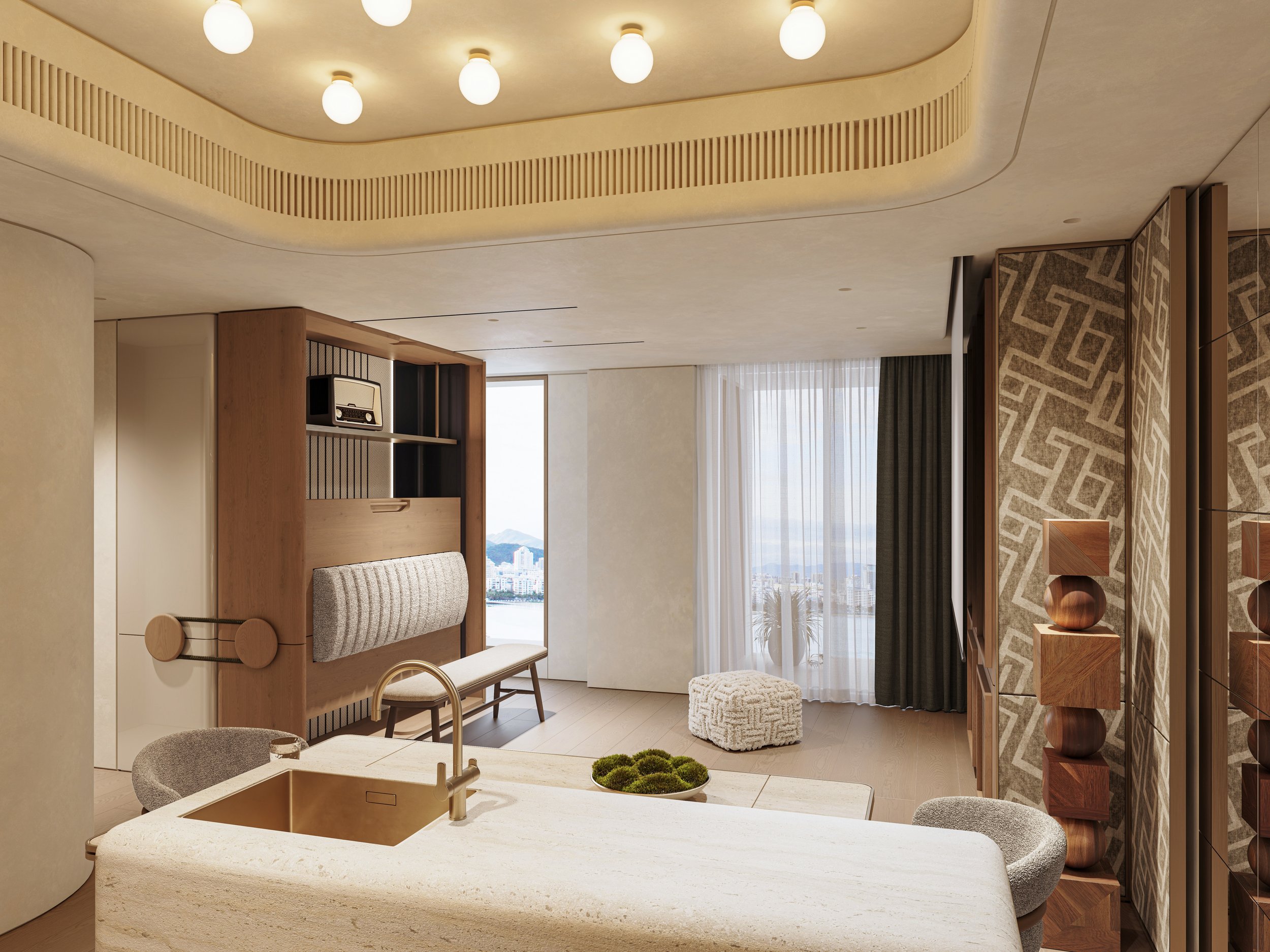
The Beloved Nest by Bagua+Bhava
Interior design practice Bagua+Bhava has transformed a compact 600-square-foot apartment into a flexible living environment that adapts to the evolving needs of a multi-generational family.
Named “The Beloved Nest”, this residential project navigates the spatial constraints of urban living while prioritizing adaptability and emotional connection.
The apartment serves as home to Charlotte, her mother, twin boys, and their cat, with the design reflecting a deep understanding of their daily rhythms and requirements. The project responds innovatively to post-pandemic living, where the traditional delineation between work, leisure, and domestic spaces has dissolved. "The post-pandemic era has heightened our awareness of the need for adaptable living spaces," explains the studio. "We approached this project with the concept of 'flex spaces' - areas that seamlessly transition between different functions throughout the day."
The layout is anchored by an open-plan kitchen and dining area that flows into the living room, where the studio has positioned their key design intervention: a transformable cabinet system. This versatile centerpiece serves multiple functions, morphing from the children's bedroom to a morning exercise space, and later into a cozy family gathering spot for evening entertainment.
Careful consideration has been given to the different routines of family members. Separate entrances and corridors minimize disruption between Charlotte and her mother's varying schedules, while a strategically placed study area between bedrooms allows for work without disturbing family life.
The designers have employed several techniques to enhance the perception of space. Mirrors serve both functional and aesthetic purposes, adding sophistication while creating an illusion of expanded dimensions. The studio has also curated an art collection throughout the home, believing in its power to stimulate children's creativity and perception.
In the master bedroom, twin beds accommodate different sleep schedules while maintaining the intimate connection between mother and daughter. This thoughtful arrangement exemplifies the project's success in balancing practical needs with emotional considerations.
The multi-functional cabinet, which dominates the living area, showcases the studio's innovative approach to space optimization. During the day, it can be configured to provide a private study area equipped with ergonomic furniture for the children's homework. As evening falls, it transforms into an entertainment hub where the family can gather for movies or gaming.
Storage solutions have been meticulously integrated throughout the apartment, maintaining order while allowing for the space's multiple functions. Even transitional spaces have been reimagined, with one corridor cleverly doubling as a playful area for the family's cat.
"Our goal was to create a home that transcends its physical constraints," the studio adds. "Through careful attention to detail and adaptable design solutions, we've crafted an environment that nurtures both the practical and emotional needs of its inhabitants."
-
More detailed information on the Bagua+Bhava can be found via this website.
Related Content
"Woodland Whispers," an evocative exhibition by no.29, transforms the entry room of Amelie, Maison d'Art's NYC location into a contemplative sanctuary.
Fusina is a sculptural fire pit designed by José Bermúdez, paying tribute to the architectural style of Venetian architect Carlo Scarpa, with an intriguing organic shape that enhances the connection between the object and the user.
Lodes presents Cono di Luce in collaboration with Ron Arad Available from January 2024




















